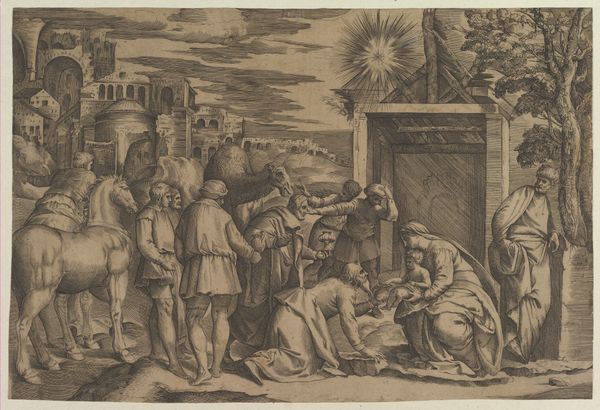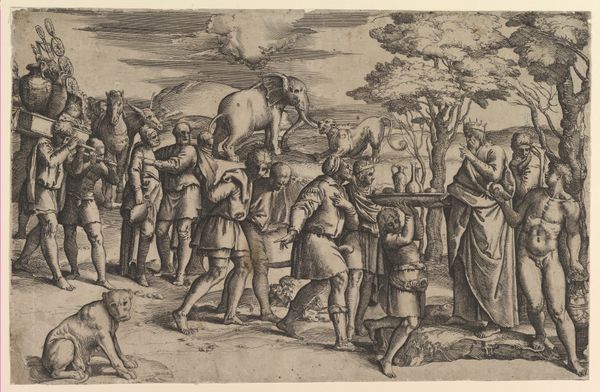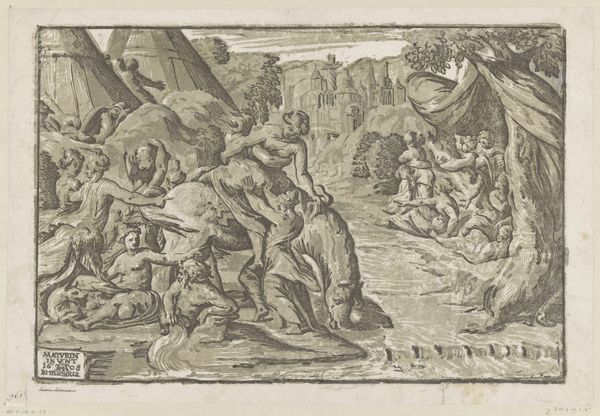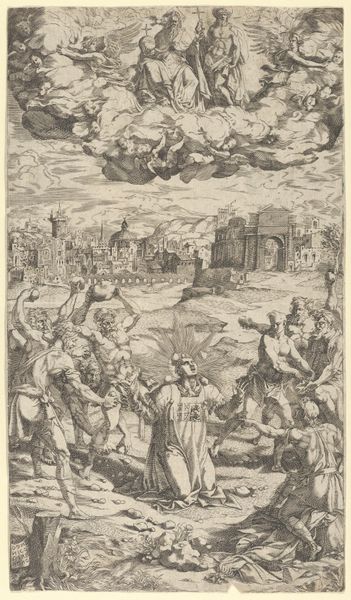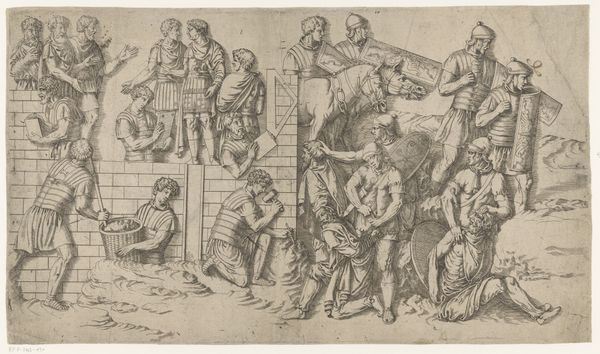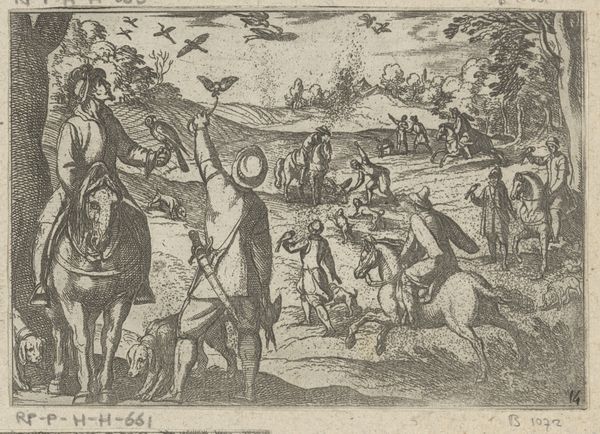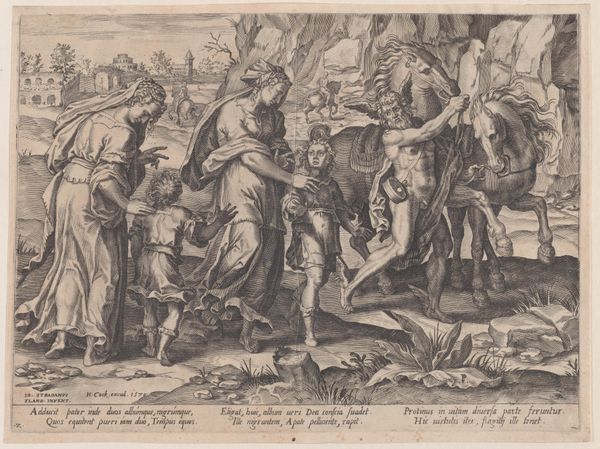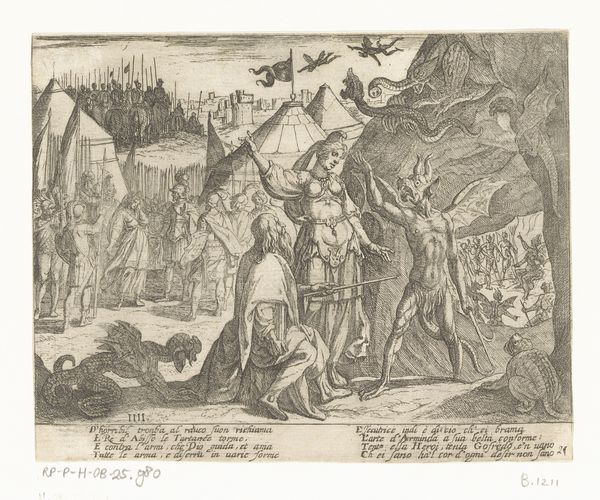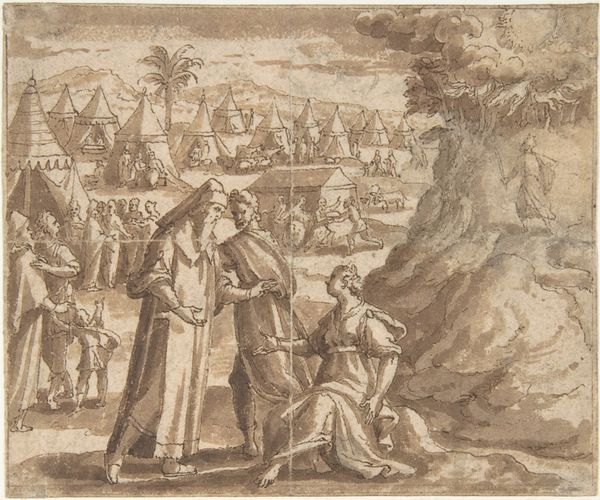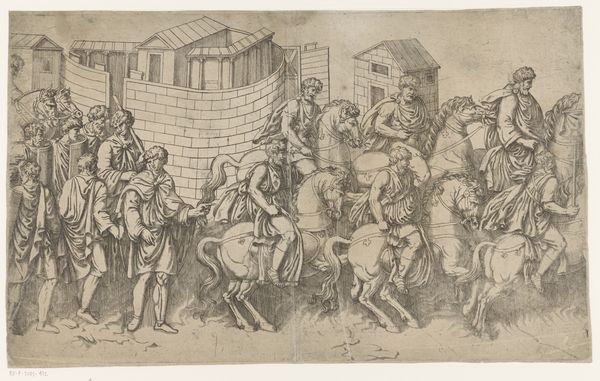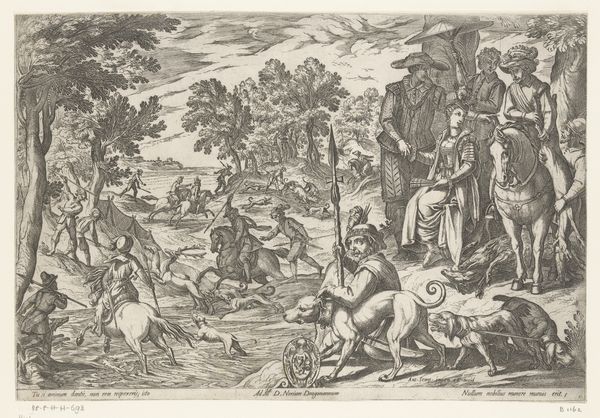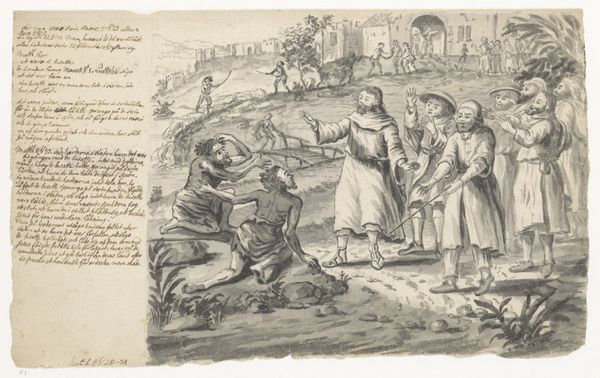
print, engraving
#
ink drawing
# print
#
mannerism
#
history-painting
#
italian-renaissance
#
engraving
Dimensions: height 272 mm, width 445 mm
Copyright: Rijks Museum: Open Domain
Curator: This rather intense, almost frenetic print is called "Scène uit de Dacische Oorlogen," or "Scene from the Dacian Wars," created between 1537 and 1550 by Antonio Fantuzzi. It's an engraving. My first thought? It seems terribly laborious! All those men chopping wood... and moving things... I am instantly exhausted just looking at it. Editor: "Laborious" is an apt word. Fantuzzi's depiction presents an idealized, if strenuous, vision of Roman expansionism. These men aren't just chopping wood; they're constructing the infrastructure of empire during the Dacian Wars of the early second century AD. Curator: Ah, I see. The historical context definitely adds weight to it. But even without knowing the specifics, there's a sense of… orchestrated activity? Everyone seems to have a task, though I couldn’t tell you exactly what they’re building. Some kind of fortification? And is that...gardening? Planting new trees? Editor: That layering of destruction and creation is exactly the point! Note how Fantuzzi situates the labour; we witness men demolishing the forest with axes as others diligently plant saplings. It mirrors Rome's ambition to impose a new order, reshaping the landscape to reflect their dominance. Consider the environmental implications, the ecological cost of imperial ambition. Curator: It's also quite beautiful, in a way, the delicate lines of the engraving create this shimmering effect of movement, despite the sort of grim subject matter. There is a definite visual pleasure here, an almost detached feeling about how beautiful labor can be...until your back hurts, anyway. Editor: The style definitely contributes to that. Its Mannerist elegance almost neutralizes the violence, drawing the viewer in to consider power relations within these spaces, and consider its role in later historical events through the centuries, continuing into our own present time. Curator: That's so insightful, I feel like my initial sense of detached observation is actually crucial, and also kind of sad, given all we have just discussed. Editor: Yes, the disquieting tension between aesthetic pleasure and historical consequence is central to the work. It’s a conversation worth continuing.
Comments
No comments
Be the first to comment and join the conversation on the ultimate creative platform.
